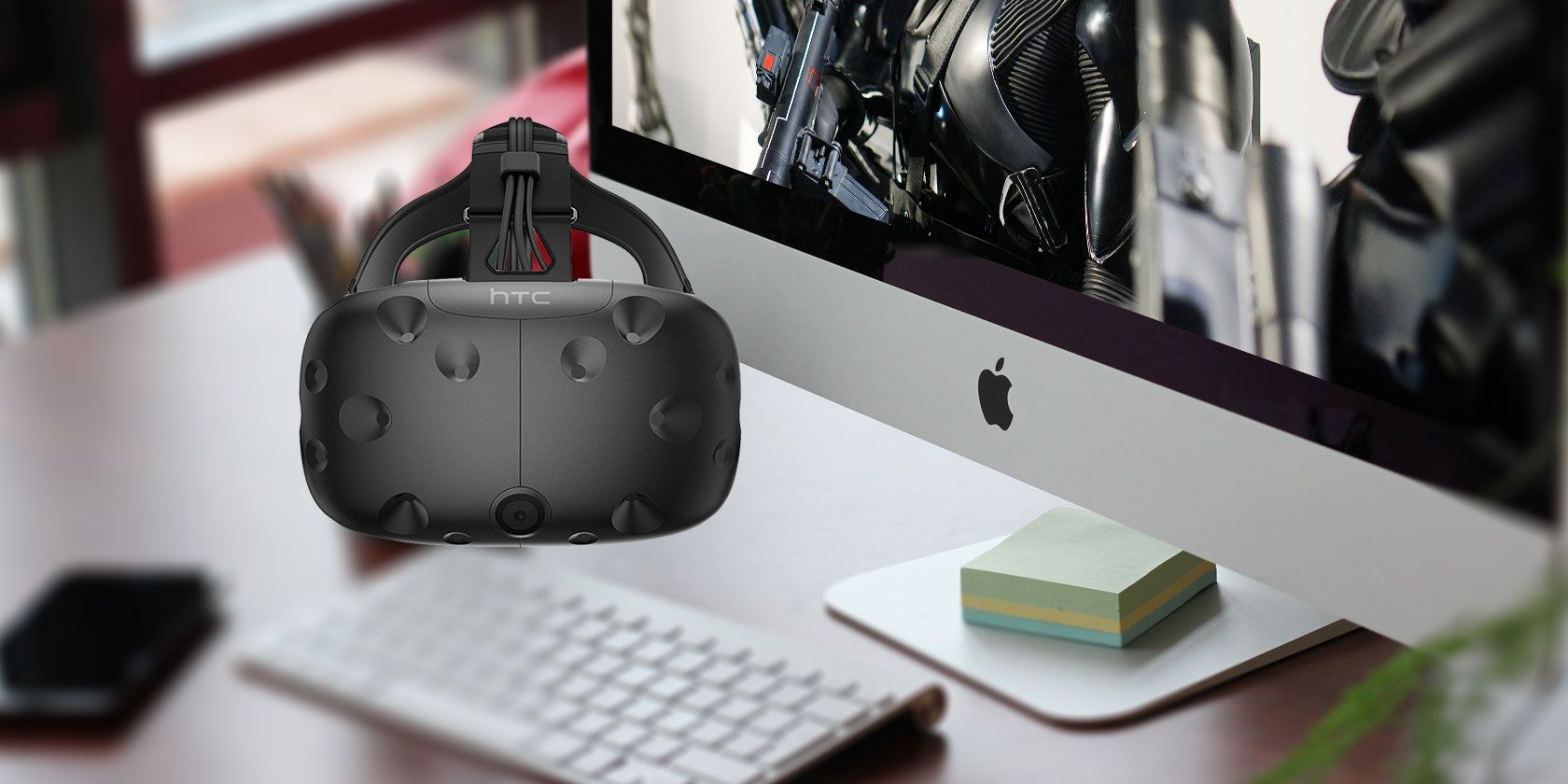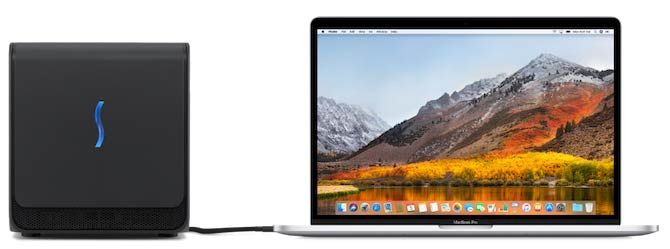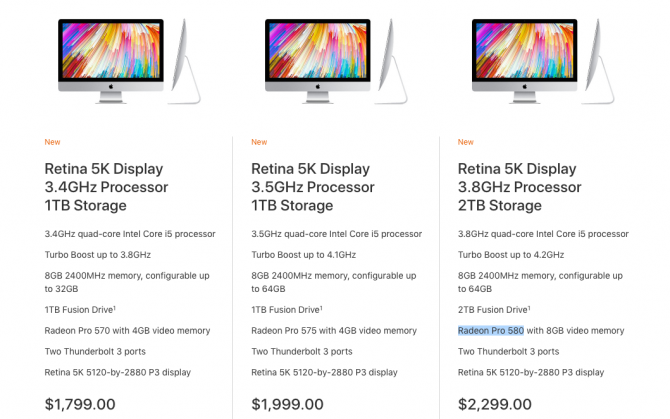Oculus founder Palmer Luckey once said that they'll support VR on the Mac "as soon as Apple releases a good computer." It should come as no surprise then that when Industrial Light and Magic took to the stage at the June 2017 developer's conference to demonstrate the VR capabilities of new Macs, they did so with the rival's HTC Vive headset.
That's right: Macs can do VR now (but not with the Oculus Rift).
"It boils down to the fact that Apple doesn't prioritize high-end GPUs. You can buy a $6,000 Mac Pro with the top of the line AMD FirePro D700 and it still doesn't meet our recommended spec. If they prioritize higher-end GPUs like they used to for awhile back in the day, I think we'd love to support Mac."
-- Palmer Luckey, 2016
Here's the stage demo from Industrial Light and Magic (a movie CGI effects studio) demonstrating one of the ways they plan to use VR for storyboarding.
Which Macs Can Do VR?
A range of new iMacs were launched at WWDC and are already available to buy, but not all of them are VR-capable. According to AMD itself, you'll need at least a Radeon Pro 580. That rules out both the entry-level 21.5" iMac (which has an Intel Iris GPU) and the 21.5" 4K models (which have only a Radeon Pro 555 or 560).
You'll therefore need the 27" 5K top-end iMac, and you'll need the highest specified edition, which has the 580 -- that's $2,300! Even then, the 580 is roughly equivalent to an Nvidia GeForce 1060, which is considered good but not quite a top-end card for VR gaming. It'll likely be seriously underpowered in less than a year.
The new iMac Pro, which starts at $5,000, will of course also be VR capable.
It's not yet clear if lower-end cards will be locked out of VR capabilities or merely provide inadequate performance, causing dropped frames. I suspect the former, given that dropped frames can be enough to cause VR sickness (and that's the last thing Apple will want).
In addition, and perhaps most significantly, Apple is supporting external graphics adapters (eGPUs) via a Thunderbolt 3 USB-C enclosure. The developer kit available costs $600 but includes a Radeon Pro 580. Into that, you should (in theory) be able to place another supported graphics card when it comes time to upgrade.
That's a huge move, but for now it's only available to developers. Thunderbolt 3 ports can already be found on 2016 Macbook Pros, as well as the new devices announced at WWDC.
Interestingly, those Macbook Pro users have already been able to connect an eGPU to make capable gaming machines, but they've been forced to do so through Windows running in Bootcamp mode. Whether Apple will support eGPU enclosures from third parties is also unclear, but the manufacturer of the Apple development kit is in fact SonnetTech, so it seems likely we'll see other enclosures getting support later.
When Is This Coming?
The new iMacs are available to buy today, but only the $2,300 model will be VR capable. The iMac Pro won't be out until later this year.
However, you'll also need Apple's new OS: High Sierra. A beta of that is available to developers, with the public beta later this year, and full public release in Fall.
A beta branch of SteamVR is also available today, but don't rush to download that just yet either: it requires High Sierra in order to enable VR features.
For most people then, VR on a Mac will be available Fall 2016.
How Is This Possible?
At the hardware level, VR is quite demanding: you need to generate the scene twice (once for each eye for a 3D effect) at 90 times per second to match the display rate of the headsets (read more about how the Oculus Rift works). The top-end graphics cards in the new iMac and iMac Pro line will be the only ones capable of driving a VR display with sufficient quality.
At the OS level, Apple has developed their Metal graphics API, which gives developers more direct and faster access to graphics cards. This is similar to the graphics acceleration DirectX drivers on Windows.
Of course, supporting VR on the Mac isn't something Apple could do alone. With Unity and Unreal engines both throwing their weight to the project, compiling a game to run with SteamVR could be as simple as ticking a checkbox to enable it.
What About AR?
Alongside VR for desktop announcements, Apple showed off a new iOS developer tool called ARKit. This uses the built-in device camera to accurately track basic 3D geometries of the real world, with no additional hardware required and no perceptible latency.
This means the app developers will have access to a powerful set of Augmented Reality capabilities without any additional programming. In the past, app developers had to write their own live image processing algorithms if they wanted to examine the camera scene. Now it's as simple as including ARKit in their project.
Pokemon Go provided many with their first taste of Augmented Reality: move the camera around and you could see the Pokemon in the real world. But in truth, this wasn't strictly AR -- it was more like a simple camera background with a Pokemon overlaid on top.
The Pokemon couldn't hide behind your sofa or jump out from a bush, because the app had no about what was actually in the real world. With ARkit however, this will now be possible. Pokemon will be able to identify your desk, and the monster will walk around your real world desktop, without falling off the side.
It's an impressive demo, but outside of gimmicky games, I'm struggling to see the real world use case of waving your tablet around. Instead, I suspect Apple is playing the long game. They want developers to start working on apps now, get familiar with ARKit, and see what works.
Then next year, they'll wow us with some AR glasses (similar to Microsoft's Hololens) with a nice library of compelling AR apps ready to go.
Why This Matters
Truthfully, there are no "gamers" that will go out and buy a Mac to play VR games, so the significance of having SteamVR on Mac in terms of actual game sales for developers is very small indeed. Gamers still don't play games on the Mac, even with capable hardware. You might get some creative types who need a Mac anyway and therefore decide to give VR a go, but that's not going to generate significant sales for the VR industry as a whole either.
But none of that matters. This isn't going to shift millions of VR headsets, not even close. Instead, it forms a creative backbone and gives credence to the wider VR industry.
Firstly, it means creative professionals can develop VR games on their Mac, while 360 video producers will likely be able to preview their creations directly from the new FinalCut. For content creators, who traditionally favor the Apple ecosystem, that's a convenience that will benefit everyone with a VR headset who can consume their content.
Secondly, Apple famously doesn't support anything until it really believes in it. If it's chosen to now support VR, the significance cannot be overstated. MP3s weren't really a thing until the iPod. No one was buying music online until the iTunes Store appeared. The iPhone dictated the design of nearly every mobile for most of the 21st century. So when Apple says "we think VR is a thing now," you sit up and take note.
Will you getting a new Mac for VR or upgrading your Macbook Pro with an eGPU? Do think this news is significant or just Apple being years late to the game yet again? Tell us in the comments!



